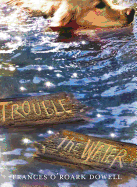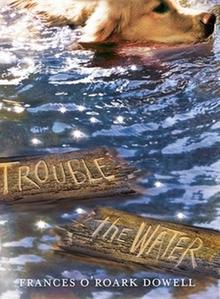
 Callie, Wendell, Jim and Thomas are four children in 1950s Celeste, Ky., who are linked by an old golden retriever, and not much else. Plucky would-be newspaper reporter Callie is an 11-year-old black girl itching for adventure but not finding much, until that unfamiliar yellow dog starts hanging around town. Wendell is a white boy about her age, burning with curiosity about an old cabin in the woods where his father used to play. Jim, who inhabits that cabin, is another white boy, mystified by his seeming invisibility and strange ability to pass through walls. He can't remember how long he's been like this--he doesn't feel dead--or why he gets such a sick feeling when he comes close to the Ohio River. Thomas, the spirit of a once-enslaved black boy who's been in the cabin even longer than Jim, is waiting for someone to "carry me across the river, so I can meet my folks on the other side."
Callie, Wendell, Jim and Thomas are four children in 1950s Celeste, Ky., who are linked by an old golden retriever, and not much else. Plucky would-be newspaper reporter Callie is an 11-year-old black girl itching for adventure but not finding much, until that unfamiliar yellow dog starts hanging around town. Wendell is a white boy about her age, burning with curiosity about an old cabin in the woods where his father used to play. Jim, who inhabits that cabin, is another white boy, mystified by his seeming invisibility and strange ability to pass through walls. He can't remember how long he's been like this--he doesn't feel dead--or why he gets such a sick feeling when he comes close to the Ohio River. Thomas, the spirit of a once-enslaved black boy who's been in the cabin even longer than Jim, is waiting for someone to "carry me across the river, so I can meet my folks on the other side."
The stories of these four children wend their way toward each other like the poison ivy-strewn paths through the woods surrounding the cabin. Despite her older brother's question, "You know there ain't no ghosts, don't you?" Callie is sure the cabin must be haunted: "That place felt funny. Felt cold and, well, occupied." Callie and Wendell work together to get to the root of the ever-expanding mystery about the cabin, the agitated yellow dog and a boy who drowned a long time ago. Callie knows a part of the mystery that Wendell doesn't: that the cabin was used as a stop on the Underground Railroad during the Civil War.
The town of Celeste is not ready for a black girl and a white boy to walk down the street together, let alone join forces, nor are they ready for an action the black newspaper is advocating--to integrate the local swimming pool. Because of the "uneasy peace between white and colored in Celeste," people don't like to "trouble the water." The feeling of injustice is old news to Callie in this "mean old world," but Wendell is just starting to wake up to the sting of it. As both characters ponder whether anything can be done to make a difference, their viewpoints evolve.
Frances O'Roark Dowell (Dovey Coe; Chicken Boy; the Secret Language of Girls trilogy) has written a spooky, slow-burning, multi-layered novel, with lively and pitch-perfect dialogue reminiscent of Harper Lee's To Kill a Mockingbird. The unsettled spirits of Jim and Thomas overlap in the cabin, neither boy ready to cross the proverbial--and literal--river to allow their spirits finally to rest. They are only freed, ironically, by the actions of a town ignited by prejudice. Callie and Wendell--troubled spirits in their own right--form a near-friendship based on what they can share, with a cautious hope for a future without boundaries between black and white. --Emilie Coulter, freelance writer and editor
Shelf Talker: In Frances O'Roark Dowell's novel, a feisty black girl and a wary white boy come together in a racially tense 1950s Kentucky town.

